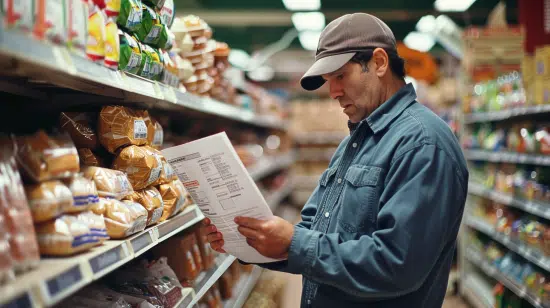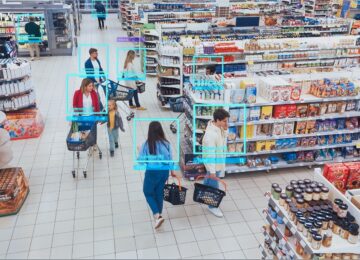What is overstock?

Controlling the inflow and outflow of your products is no easy task, whether you are a physical store or an online retailer. Overstock, in particular, is a problem faced by many businesses and can be detrimental to your finances and stock management. Where does this overstock come from, and how can you reduce it? Find out in this article by Veesion, designer of video surveillance software for supermarkets and other retail outlets.
Overstock in question
Overstock is the opposite of out-of-stock: too many items of one or more references sitting in your stockroom. It's easy to see why it's also known as "dormant stock". In other words, the turnover rate of your goods is too low or non-existent.
The origin of dormant stock
You had planned to sell a certain number of products, but unfortunately you weren't successful? Why is this? There are many reasons:
- You may have carried out your market research incorrectly;
- Unforeseeable circumstances have led to a drop in sales (bad weather, demonstrations, health crisis, etc.);
- You wanted to test a new product but it didn't work;
- The demand was there, but you didn't succeed with your marketing campaign;
- You are obliged to order a minimum number of products from your supplier;
- You had an inventory or store organisation problem that meant you had to place a new order when you already had the products in stock;
- etc.
Problems caused by dead stock
There are many consequences of overstocking:
- Firstly, in terms of stock management. Items that don't sell take up space in your stockroom. They could be replaced by other, more successful references. The same applies to your stock management software. What's more, you're wasting precious inventory time counting these products.
- What's more, you're losing money. In fact, each item undertaken has a cost: you pay the manufacturer to produce it, the carrier to receive it, the warehouse worker to put it away and keep it in stock, the marketing manager to take action to sell it despite the lack of demand, and so on.
- The product also has an environmental cost. Manufacturing and transit produce CO2, as does storage if the food has to be kept cold, and destruction if it is finally thrown away.
Processes for reducing overstock
Fortunately, overstock is not inevitable. Here are a few ways of reducing it.
Anticipation
Demand planning is the key to achieving a good balance between supply and demand, and therefore avoiding overstocking. For each product, you need to measure sales on the basis of your company's sales history, the market, competitors, supplier data and so on. Several methods exist, and you can be supported by experts or technological tools. In addition, you need to keep an eye on the market at all times, even after the product has gone on sale, in order to anticipate any increases or decreases in demand.
Inventory
By taking regular stock, you can check the actual stock of your items. In this way, you can prevent the possibility of products being forgotten in a corner of the warehouse.
Stock management software
By equipping yourself with stock management software tailored to the size of your company, you can check the quantity of your products at the click of a button. There are also tools for calculating stock rotation, notifying you when maximum (and minimum) stock levels have been reached, warning you of irregularities, and controlling your inventory and accounting management.
Returning products to the supplier
If you have not been able to plan ahead and your dead stock is already there, you can also agree with your supplier to take back your products.
Selling overstock
Clearances, promotions, sales... many operations can reduce overstock. In addition, a different location in the store, a batch sale, offering the product as a gift, or good communication can all increase your chances of success.
Donating to charities
By donating your unsold goods to charities, you can benefit from tax deductions. What's more, by showing solidarity, you improve your brand image.
Selling to a stock buy-back company
Some companies or online platforms specialise in buying back and reselling dead stock.
Bin
Sometimes, unfortunately, there is no other option but to throw out overstock items. This is particularly the case for foodstuffs, cosmetics that have expired or defective items.
Intelligent product tracking
Finally, you can combine stock management and security. RFID tags, originally designed to reduce shrinkage due to theft, can provide real-time stock tracking. Products are fitted with a tag containing a chip that communicates with readers and antennae. The information is then processed by software. This traceability solution is particularly well suited to supermarkets. It can be coupled with new-generation theft detection analysis software such as Veesion's.
Combating overstocking, or dormant stock, therefore requires a multi-pronged approach to avoid wasting time and money. This involves anticipation, effective stock management tools, appropriate sales strategies and the use of new technologies (such as Veesion's software). With our advice, you can optimise your supply chain for the long term.
The most popular
Related news
Discover what Veesion can do for you. Do you have one or more stores?
Our team will contact you within 48 hours





